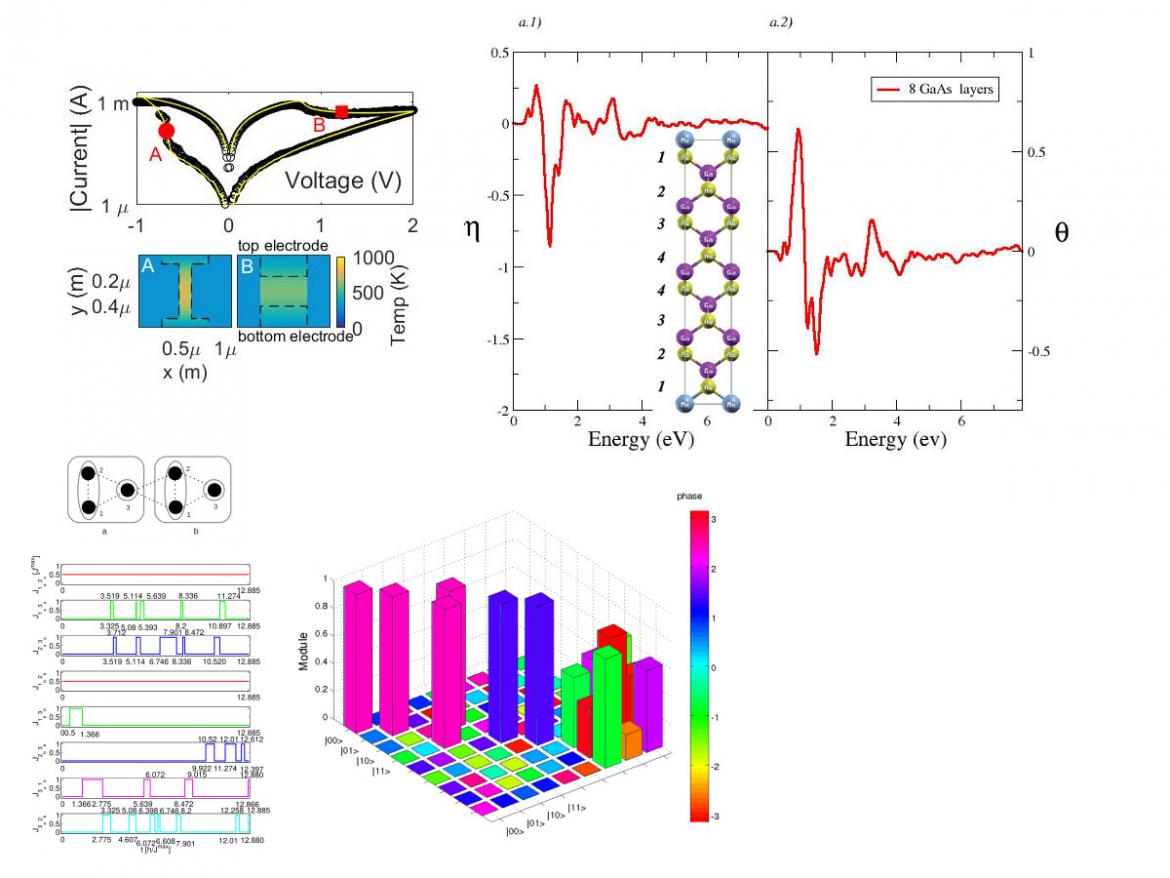
The theoretical activity of the unit of Agrate Brianza is mainly focused on the simulation of material and devices that can meet the needs of present and the forthcoming nano-electronic industry which may be based also on quantum processes
Among our main topics:
Single atom electronics, nano-electronic and spintronics: a route to ultra-scaled devices.
Tailoring of new material of reduced dimensionality for applications in nano-electronics, quantum computing, spintronics, and sensors by ab initio simulations of structural, electronic, magnetic and vibrational properties of 1D, 2D systems. Our activities include: the simulation of thin films of Diluted Magnetic Oxides; the study of the effect of chalcogen impurities in hyperdoped silicon and in nanowires; the simulation of topological insulators and Weyl semi-metals and the calculation of structural and electronic properties of 2D systems (Silicene/Germanene based structures, dichalcogenites).
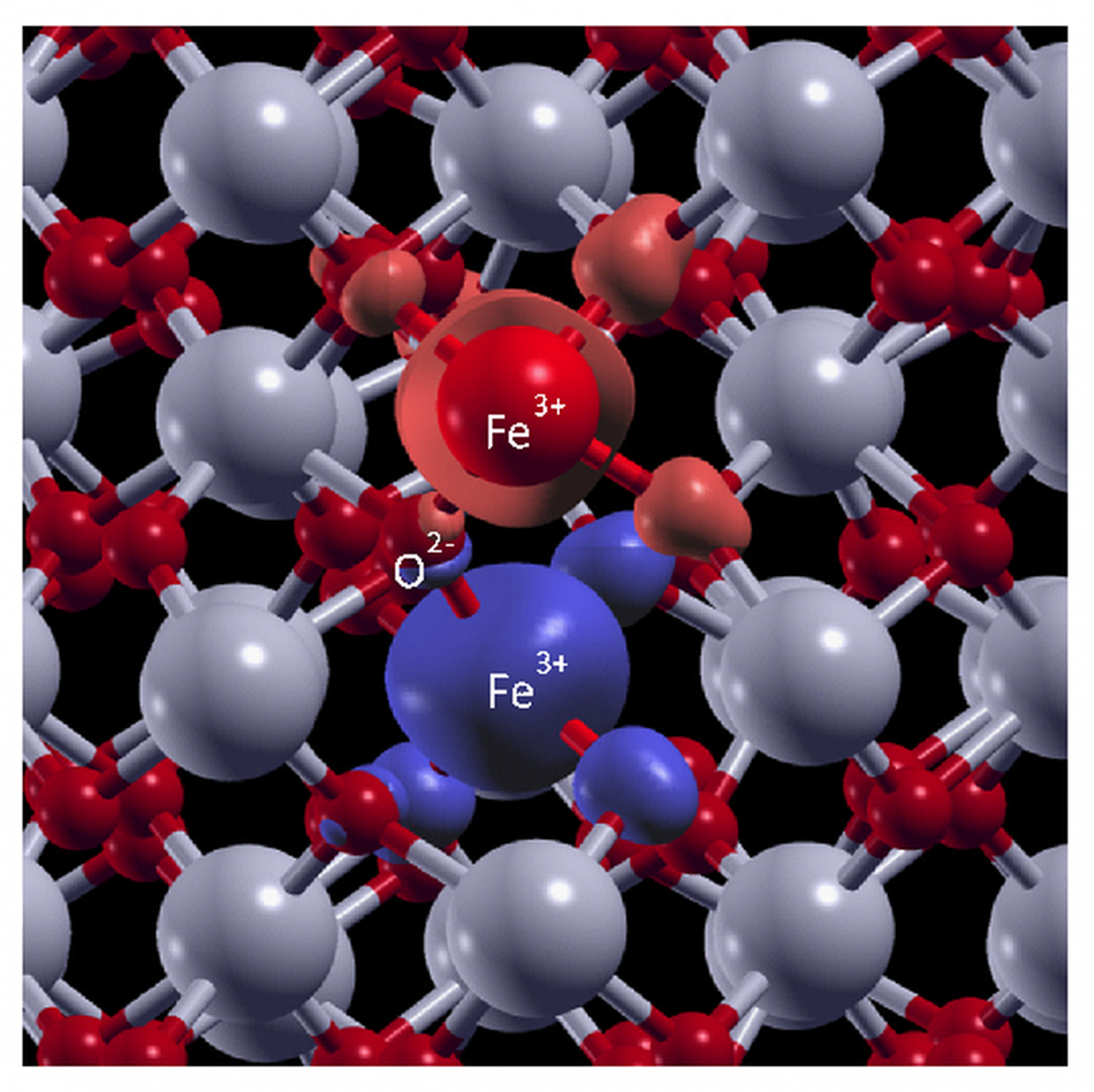
Collaborations
- Helmholtz-Zentrum Dresden-Rossendorf (Germany),
- Linnaeus University (Sweden)
Contact Person: Alberto Debernardi
Selected Pubblications:
Guido Petretto, Andrea Massé, Marco Fanciulli, and Alberto Debernardi Analysis of the hyperfine structure in chalcogen-doped silicon and germanium nanowires, Phys. Rev. B., 91, 125430 (2015).
A. Debernardi, L. Marchetti, Ab initio simulations of pseudomorphic silicene and germanene bidimensional heterostructures, Phys. Rev. B., 93, 245426 (2016)
Ab initio spectroscopy:
simulation by first-principles of experimental spectra. The main goals are the individuation of microscopic mechanism responsible of a given properties to help experimenters to interpret the experimental spectra; the prediction of optical properties of new materials to be used in novel devices. In particular, we developed the technique to compute by first principles of the magneto–optical Kerr effect (MOKE) within the framework of planewave pseudopotential method. Our benchmark was the calculation of MOKE in bulk Fe, Co, Ni, three magnetic metals whose MOKE spectra is well established. We apply our code to simulate Mn δ-doped GaAs as a test material to enlighten the capability of our method to study transition–metal–doped dilute. Further, our computational skills include ab initio simulation of XANES, and vibrational (Raman, infra-red) spectra.
Collaborations
- Università Statale di Milano (Italy), Helmholtz-Zentrum Berlin (Germany)
- ELETTRA-Sicrotrone di Trieste (Italy)
Contact Person: Alberto Debernardi, alberto.debernardi@mdm.imm.cnr.it
Selected Pubblications:
Patrizia Rosa, Davide Sangalli, Giovanni Onida, and Alberto Debernardi Ab initio electronic structure, optical, and magneto-optical properties of MnGaAs digital ferromagnetic heterostructures , Phys. Rev. B, 91, 075207 (2015)
A. Lamperti, E.Cianci, R. Ciprian, L.Capasso, E. Weschke, A. Debernardi Magnetic properties of iron doped zirconia as a function of Fe concentration: From ab initio simulations to the growth of thin films by atomic layer deposition and their characterization by synchrotron radiation, J. Vac. Sci. Technol. A, 36, 02D404 (2018)
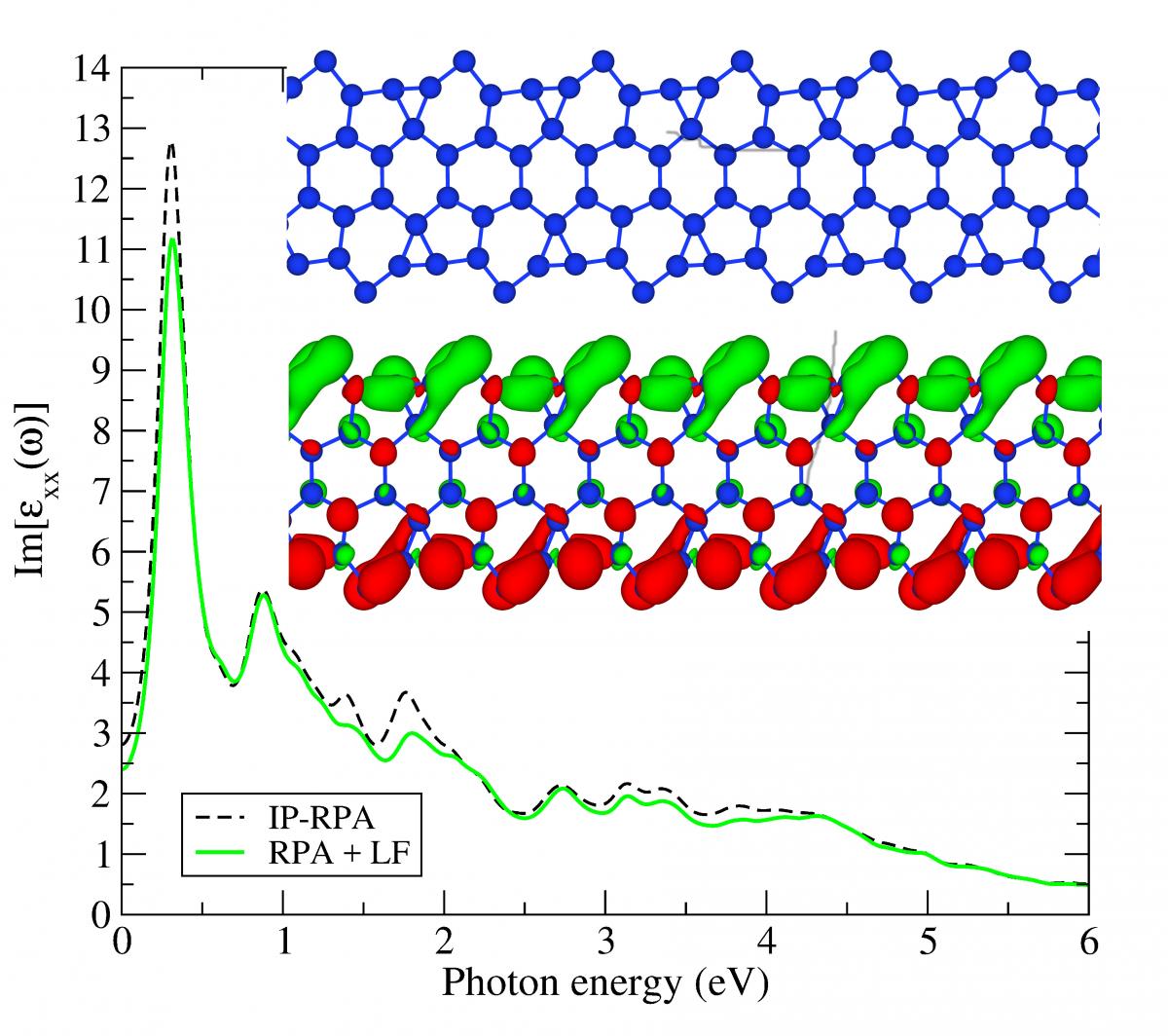
Quantum computation with semiconducting qubit for quantum information processing.
A rich exploitable platform for universal quantum computation is represented by the confinement of electron spins in host semiconducting materials. The confinement is achievable following different routes, from electrostatically or self-assembled quantum dots to donor nuclear spins in solid matrices or combination of them. Semiconductor nanostructures based qubits are an attractive scenario for technological applications due to their relatively long coherence times, the easy manipulation, fast gate operations and potential for scaling. In particular the interest towards silicon qubit is immediately linked to the integrability with the already existing CMOS infrastructure of the microelectronic industry.
Our research is mainly focused on five qubit implementations: the quantum dot spin qubit (SQ), the double quantum dot singlet-triplet qubit (STQ), the double quantum dot hybrid qubit (HQ), the donor qubit (DQ) and the quantum dot spin-donor qubit (SDQ). Those five qubits are investigated due to the possibility to be held in a common nanoscaled device shown in Fig.1, where a semiconductor nanowire (in red) is electrically insulated from two metal gates (in purple) by a dielectric. For every qubit type we derived the effective Hamiltonian model and the analytical sequence times that realize single qubit operations on the Bloch sphere along the principal axis. A fidelity gate analysis by using a Gaussian noise model has been carried out. In Fig. 2 we report a comparions among the Rz(π/2) gate infidelities of all qubit types due to time interval error as a function of the standard deviation σt when all the control parameters are fixed; the smallest time of sequence step tmin for each qubit type is also reported.
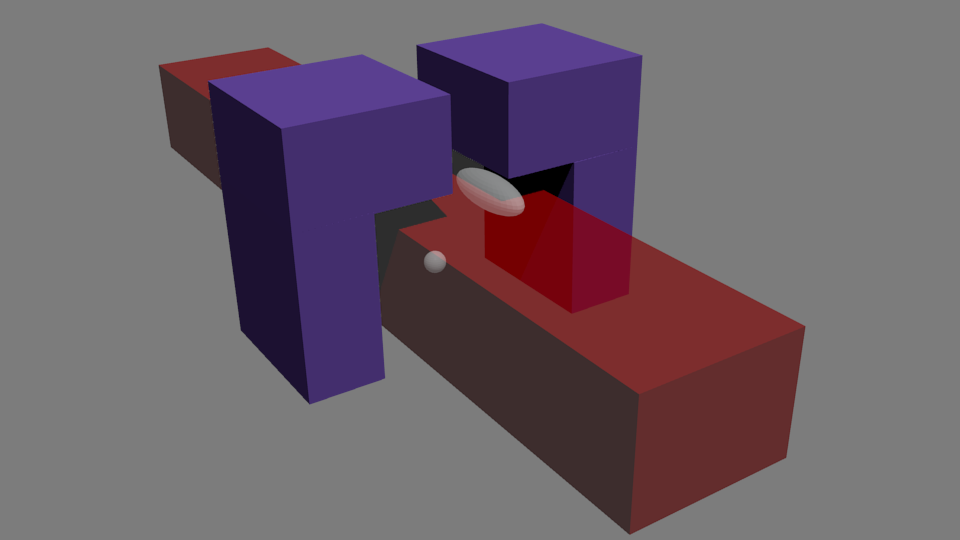
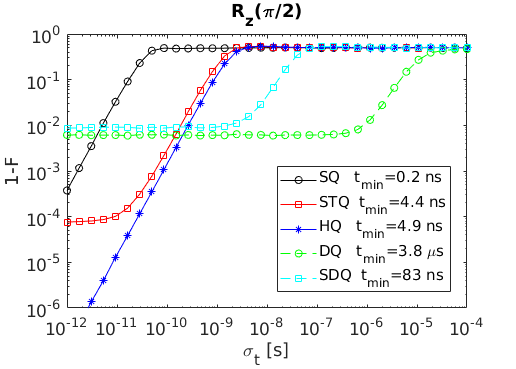

We are also interested in the coherence time analysis of such architectures including the effects of magnetic and electrical noises on the dynamical evolution. Fig. 3 reports the exctracted coherence times T2* for the HQ obtained through an envelope-fitting procedure on the return probabilities as a function of the deviation standards related to the magnetic noise σE and to the electrical noise σj when some geometrical parameters are fixed. Typical minimum magnetic noise variances for Si and GaAs are highlighted.
Contact persons: Dr. Marco De Michielis, Dr. Elena Ferraro.
Projects: European Union’s Horizon 2020 research and innovation program under grant agreement No 688539 MOS-QUITO.
Software: Matlab, COMSOL Multphysics
Articles:
[1] De Michielis M, Ferraro E, Fanciulli M and Prati E 2015 Journal of Physics A: Mathematical and Theoretical 48 065304
[2] Ferraro E, De Michielis M, Fanciulli M and Prati E 2015 Physical Review B 91 075435
[3] Ferraro E, Fanciulli M and De Michielis M 2017 Quantum Information Processing 16 277
[4] Ferraro E, Fanciulli M and De Michielis M 2018 Quantum Information Processing 17 130
Physics-based modeling of memristive devices and system level simulation of memristive neural networks
Memristive devices are two terminal metal/insulator/metal structures capable of changing their resistance upon voltage application as a result of electric-field driven and temperature activated ionic movement. They are recognized as a key-enabling technology for various in-memory computational schemes, as the neural/neuromorphic one, thanks to their rich dynamical features.
At the theoretical level, through finite element methods, we solve equation-based multiphysics-models that take in to account ionic drift and diffusion, electronic conduction in insulators and electrically-induced local heating. The models simulate the electrical operation to be compared to the experimental results collected in the Unit of Agrate Brianza. Therefore, the theoretical modelling activity of memristive devices serves as a tool both for the understanding of the experimental observations, as well as, for defining paths for device engineering.
Behavioral compact models, able to capture the average operation and the variability of the devices (panels a-b) are developed for the system level simulation of spiking neural networks (SNNs). SNNs are constituted by biologically-plausible electronic versions of neurons and synapses constituted by memristive device(s). The neuron-synapse system as a whole learns spatio-temporal patterns and operates generalization, classification and inference tasks (panels c-d).

(a) experimental analog resistance evolution of a Pt/HfO2/TiN device driven by positive (blue) and negative (red) identical pulses. (b) simulation of the resistance evolution through a compact modeling including variability. (c) Classification rate of a SNN trained to recognize 10 hand written digits (MNIST) as a function of the number of presented digits during the training phase. The SNN employs 10 output neurons for each digit class and memristive synapses simulated as in (b). (d) Map of the weights (normalized conductance) of the memristive devices after the presentation of 2000 training images.
Collaborations
-
Institute of Neuroinformatics (INI), University of Zürich and ETH Zürich
-
Dipartimento di Scienza Applicata e Tecnologia (DISAT), Politecnico di Torino
-
Laboratoire d'électronique des technologies de l'information (LETI) - Commissariat à l’Energie Atomique et aux Energies Alternatives (CEA)
Contact Person: Stefano Brivio, stefano.brivio@mdm.imm.cnr.it
Running Projects
NeuRAM3- NEUral computing aRchitectures in Advanced Monolithic 3D-VLSI nano-technologies (Horizon 2020, grant. 687299, 2016-2018); web site: http://www.neuram3.eu/
Employed Software
MatLab, COMSOL Multiphysics
Selected Publications
- S. Brivio and S. Spiga, “Stochastic circuit breaker network model for bipolar resistance switching memories”, Journal of Computational Electronics 16(4) 1154 (2017)
- S. Brivio, J. Frascaroli and S. Spiga, “Role of Al doping in the filament disruption in HfO2 resistance switches”, Nanotechnology 28(39) 395202 (2017)
- E. Covi, S. Brivio, A. Serb, T. Prodromakis, M. Fanciulli, and S. Spiga, “Analog memristive synapse in spiking networks implementing unsupervised learning”, Front. Neurosci., vol. 10, p. 482 ( 2016)
Local contact: Alberto Debernardi, alberto.debernardi@mdm.imm.cnr.it

